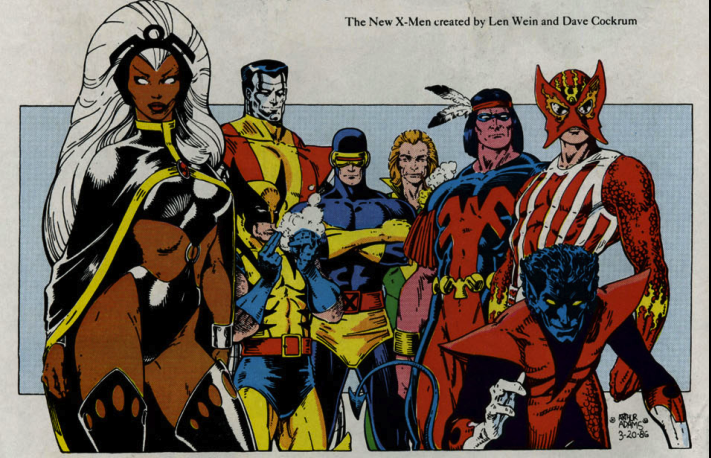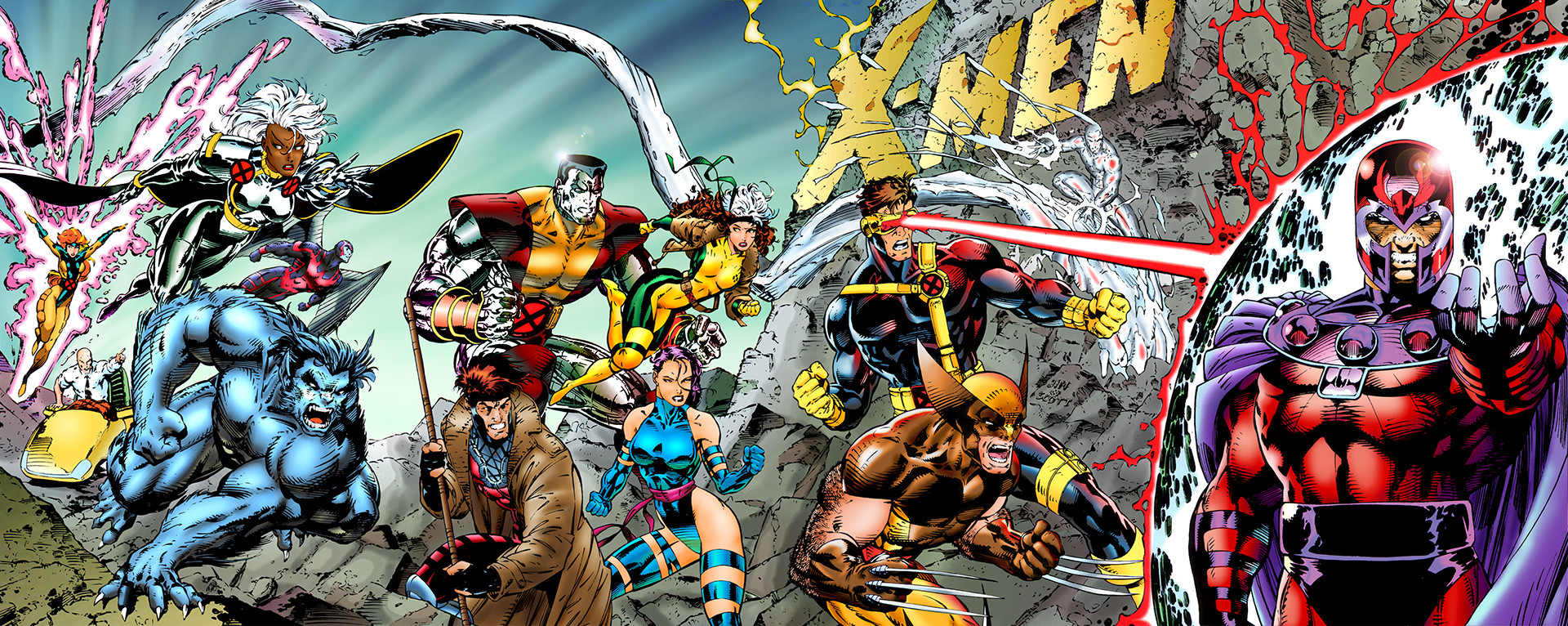Right before I graduated high school in June of 2001, the main remaining X-Men titles at the time were used for a classic ‘X-Men vs. Magneto’ crossover titled “Eve of Destruction”. Nearly a year before that, the first film of the X-Men franchise was released. The film had an effect on the aftermath of the aforementioned crossover. After the “Eve of Destruction”, the X-titles were revamped and streamlined with the focus now being on just three of them: The flagship title The Uncanny X-Men, a brand new book titled X-Treme X-Men, and the acclaimed adjectiveless X-Men became New X-Men under the acclaimed creative team of scribe Grant Morrison and artist Frank Quitely.
 Each costume of the international team reflected their cultural identity, even down to color schemes.
Each costume of the international team reflected their cultural identity, even down to color schemes.
Not only did the classic logos change for these books, not only were rosters changed, but costumes were changed. The former and the latter titles had the feature characters dressed in black leather costumes just like the movies while the medial title’s characters had a red/black color scheme to theirs. Grant Morrison justified this change by explaining that the 2000 movie got it right in practical terms, reasoning that real-life X-Men wouldn’t walk outside dressed in their classic costumes. For years, fans took this at face value until the decline in quality of the X-Men films. Most (including the film’s producers) believed that the classic costumes couldn’t translate to film. However, the success of Deadpool and the MCU’s films prove otherwise.
Kristian Williams has analyzed why the X-Men need individual costumes and how the film franchise’s uniformity of costumes took away a big chunk of property’s potential for success and its uniqueness. He examines all mass media of the property, including the depictions of the ’90s cartoon. It’s pretty informative and well-put together. Have a look.
Source: kaptainkristian | Follow Action A Go Go on Twitter and Instagram | Be sure to leave your thoughts in the comments section!


